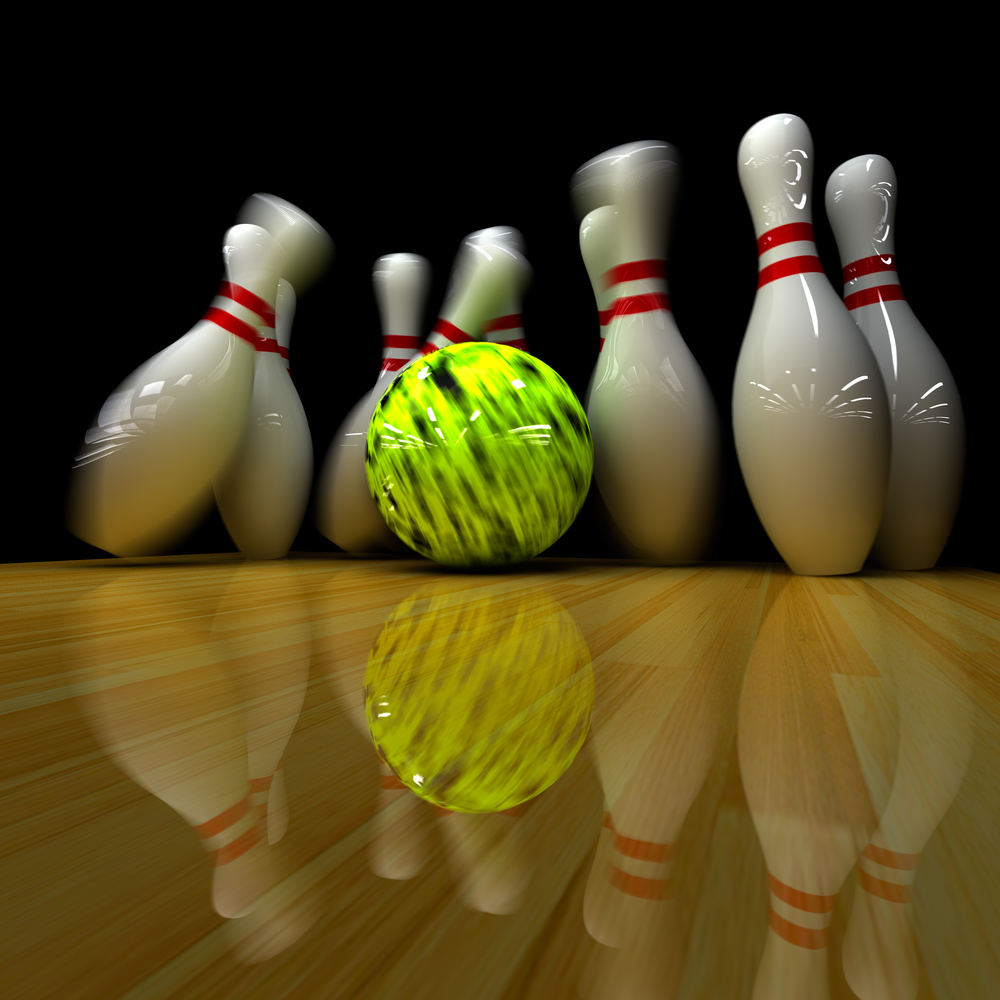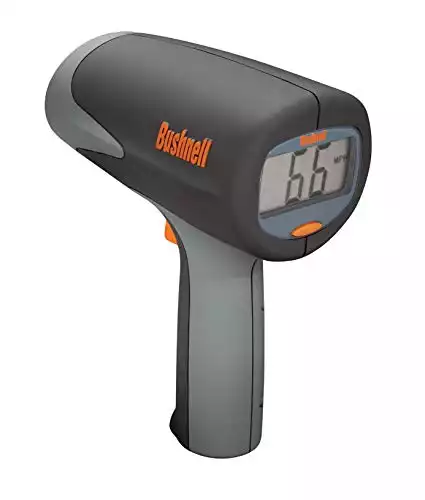
Your bowling ball's speed can change the trajectory of your game in a big way. And that's why more and more people are making it a point to learn more about how hard/fast they should throw their bowling balls. If you want to know more about the ideal bowling ball speed for high scores, the fastest bowling ball speed ever recorded, and more, keep reading.
This article will tell you all you need to know about fast bowling ball speeds.
Contents
- 1 Fast Bowling Ball Speed
- 2 Is Faster Better
- 3 What Happens if You Throw Your Bowling Ball Too Slowly?
- 4 How to Find Out How Fast You Bowl
- 5 How to Reduce Your Bowling Speed
- 6 How to Increase Your Bowling Speed In 3 Ways
- 7 How to Find the Right Bowling Ball Speed for You
- 8 Common Mistakes People Make When Changing Their Bowling Speed
- 9 Other Factors That Affect Your Scoring Potential in Bowling
Fast Bowling Ball Speed
The Average Bowling Ball Speed
The United States Bowling Congress (USBC) is the main governing body for the sport of bowling in the United States. According to their recommendations, the ideal bowling ball's average speed for high scores is between 16 and 17 miles per hour (mph) when the ball hits the pins. To achieve that speed, the average person playing competitively should launch the ball at around 21 mph.
Of course, this is just a recommendation. And some professional bowlers have been known to throw their bowling balls much faster than this.
The Fastest Bowling Ball Speed Ever
It may be a surprise, but the fastest bowling ball speed record is about 5 times faster than the USBC recommendations. The fastest shot ever occurred in 2002 by bowler Shoaib Akhtar. He threw the ball at a whopping 100.2 miles per hour!
No other bowler has broken this record since then.
Is Faster Better
The truth is that faster is not always better when it comes to bowling ball speed. If you're just starting out, it's probably better to err on the side of caution and go a bit slower. How fast you bowl can have a drastic effect on your accuracy.
Many find that reducing their bowling ball speed just a bit results in more strikes.

What Happens if You Throw Your Bowling Ball Too Slowly?
If you're not throwing your bowling ball fast enough, there's an increased chance it will end up in the gutter or deflection (the ball bounces off the pins). This risk increases exponentially the slower you throw your ball. What's considered a slow throw?
If your bowling ball speed is under 11 mph, you're probably throwing too slowly. Of course, there are always exceptions to the rule. Some people find they do better when they throw their bowling balls a bit slower. The key is to experiment and see what works best for you.
How to Find Out How Fast You Bowl
Most of us don't have speed guns to measure our bowling ball speeds. But that's okay! There are other ways to get a good idea of how fast you're throwing your ball. The best way is to time yourself as you bowl.
If you have access to a stopwatch or timer, start it when your ball leaves your hand. Then, time how long it takes for the ball to reach the pins at the end of the lane. If your ball takes 2.5 seconds to reach the pins, your speed is about 16.7 mph.
There will probably be some variation in your speed from one throw to the next. And that's normal! Just try to get a general idea of how fast you're throwing your bowling ball so you can adjust as needed.
Bowling ball speed/time conversion chart to calculate your bowling ball speed:

How to Reduce Your Bowling Speed
If you're worried that your average bowling ball speed is too fast, there are a few things you can do to reduce your speed. The most common way is to reduce your backswing. A shorter backswing means less momentum, which leads to a slower ball.
You can also try using a heavier bowling ball; a heavier ball is harder to throw as fast. If you don't want to invest in a new bowling ball, try adding weight to your current one with weight bearings. But be aware that adding weight to your bowling ball may make it ineligible for tournaments and competitions.
If you're still having trouble slowing down your average ball speed, put a little less elbow grease into your swing. That means don’t swing the ball as hard as you normally would– this method can give you instant results. With practice, you’ll know exactly how much to hold back to reach your ideal bowling ball speed.
How to Increase Your Bowling Speed In 3 Ways
If you want to increase your bowling speed, there are a couple of things you can do.
First, try taking a longer backswing if possible. This will give you more momentum, leading to a faster ball.
Second, you can also get into strength training so you can put a little more power behind your throws.
Third, go for a slightly lighter ball – doing so will make it easier to throw the ball harder and increase your speed.
How to Find the Right Bowling Ball Speed for You
The best way to find the right bowling ball speed is to experiment. There's no other way to see what works best. Try throwing your ball at a few different speeds and see how you score.
If you're having trouble with accuracy, try reducing your speed. And if your ball barely makes it to the pins and they topple over slowly, you're probably throwing too slowly. The key is to find a balance between speed and accuracy.
The ideal ball speed is comfortable, consistent, and effective on the bowling pins.
Common Mistakes People Make When Changing Their Bowling Speed
One of the most common mistakes people make when trying to change their bowling speed is forgetting about their release point. Your release point is the point at which you release your ball.
Another common mistake is getting so technical about their ball's speed that they forget the other aspects of bowling well. Some even get so tense that they make mistakes they wouldn't usually make.
Lastly, people often make the mistake of thinking that they need to make substantial changes to improve their scores. But that's not necessarily true. Sometimes, all you need is a slight adjustment here or there.
Don't overhaul your entire game just because you're trying to change your bowling speed!
Other Factors That Affect Your Scoring Potential in Bowling
While your bowling speed is important, it's not the only factor that affects your score. In fact, many other aspects of your game are just as important, if not more so. Here are some other factors that deserve your attention:
- Your form and technique. Your form and technique are critical to bowl well. Ensure you're using the proper grip and releasing the ball at shoulder level. If your form is off, no amount of speed will help you get a strike.
- Your shoes also play a role in your game. They should be comfortable and provide good support. If your bowling shoes are too loose, you could slip when you throw the ball. And if they're too tight, you'll be uncomfortable and could get distracted.
- Your mental game is also crucial to your scoring potential. Total focus and concentration are key if you want to perform your best. If you're not in the right frame of mind, it'll be difficult to bowl well.

Related Articles
- Bowling Ball Speed
- No Work Is Done by Gravity on a Bowling Ball That Rolls Along a Bowling Alley Because
- Oil Patterns Bowling
And we haven't even gotten into lane conditions, how much your bowling ball hooks, or the importance of practice! As you can see, there's a lot that goes into bowling. So, if you're serious about improving your game, you must take a holistic approach.
So, there you have it - everything you need to know about bowling ball speeds, how to check your bowling ball speed, and how to put everything into perspective.
We hope that this article was helpful to you, and we wish you the best as you expand your bowling knowledge!
Kira Byrd, a Certified Fraud Examiner, holds a B.S. in Accounting from the University of Alabama at Birmingham. With a passion for bowling from her childhood, Kira has poured her expertise and personal experiences into creating and nurturing Bowling For Beginners. Kira's mission is to meet new bowlers where they are and guide them toward consistently achieving higher scores. With a focus on skill development and strategic techniques, she empowers readers to take control of their game and unlock their true potential.
Bowling For Beginners embodies strict editorial integrity, ensuring reliable and unbiased information. Kira's commitment to delivering valuable insights and practical strategies is reflected in every article. Here's an explanation of our editorial policy and how we get money.






